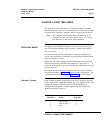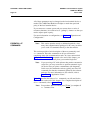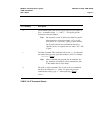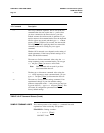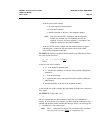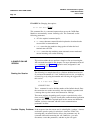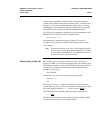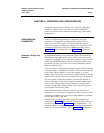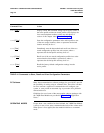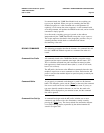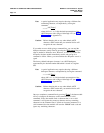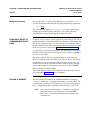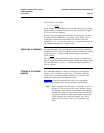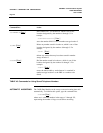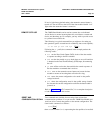
CHAPTER 4: OPERATION AND CONFIGURATION
DEFINITY Communications System
7400B Data Module
Page 4-2
User’s Guide
Command Line:
Action:
at&f
[ Enter ]
Recall the factory-default configuration settings into the
active profile.
at&v
[ Enter ]
Display current AT command settings and S-register values in
the active profile and the two stored profiles (also displays the
four stored telephone numbers, which are described in a
section of this chapter titled “Number Storage”).
at&w
n
[ Enter ]
Store the configuration parameters in the active profile to one
of the two storage locations, where n represents the desired
location and may be 0 or 1.
atz
n
[ Enter ]
Immediately reset the data module and recall one of the two
stored configuration profiles into active status, where n
represents the desired profile and may be 0 or 1.
at&y
n
[ Enter ]
Recall one of the two stored configuration profiles into active
status when the data module is powered on, where n
represents the desired profile and may be 0 or 1.
TABLE 4-1 Commands to Store, Recall and View Configuration Parameters
PC Software
Many data communications software packages for use with PCs provide
the possibility of writing script or command files. These files can then
be run to execute a sequence of commands that will configure your
system, or even provide an automatic log on procedure for a particular
remote end device.
Guidelines for use of some of the more popular software packages with
the 7400B Data Module are provided in Appendix C, “Application
Notes.”
OPERATING MODES
Except when a test condition has been initiated, the 7400B Data Module
is always in one of two states: command mode and on-line or data mode.
When power is first applied, the data module initializes to command
mode.



